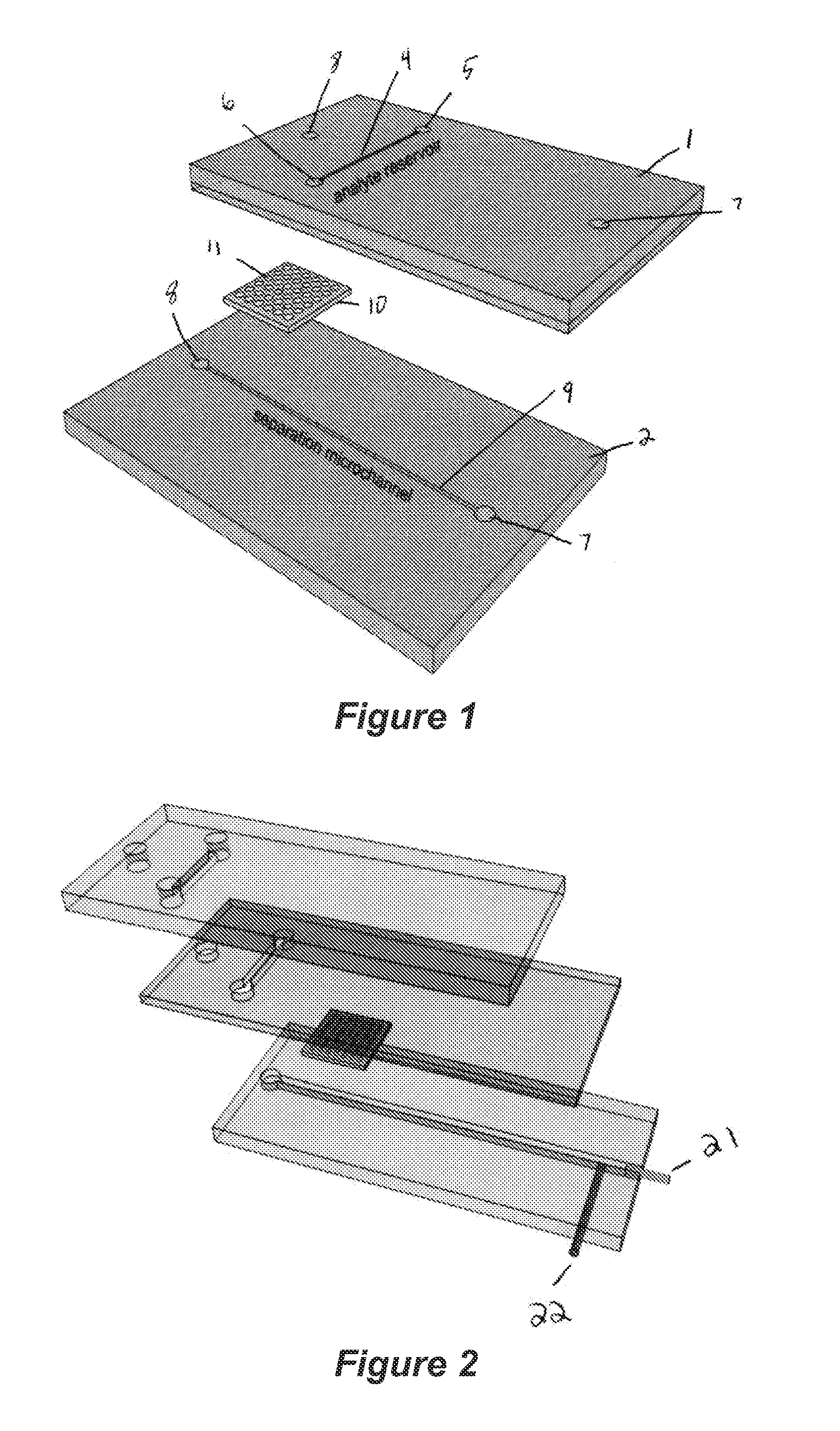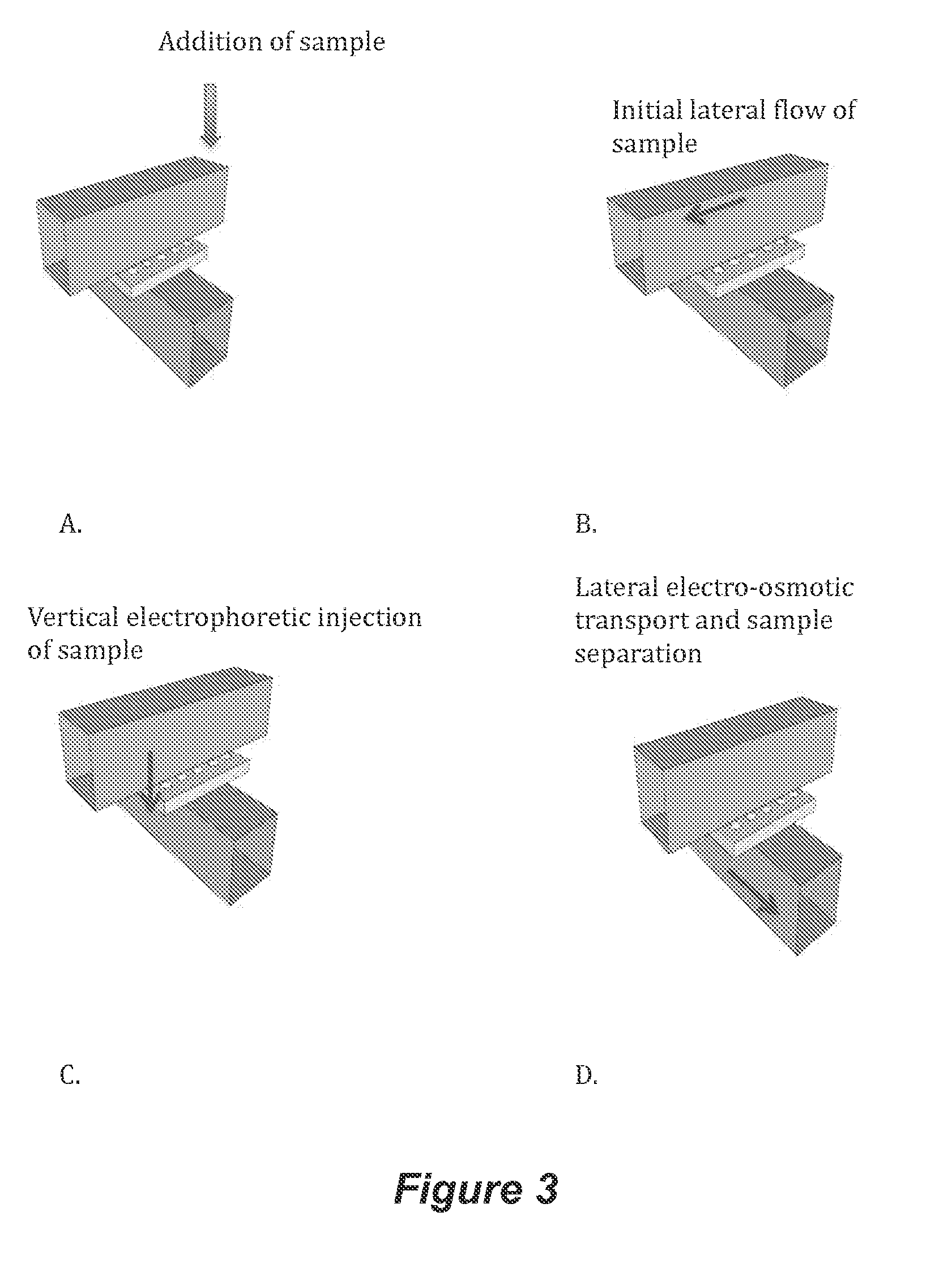Non-aqueous microchip electrophoresis for characterization of lipid biomarkers
a technology of lipid biomarkers and microchips, which is applied in the direction of fluid pressure measurement, liquid/fluent solid measurement, peptides, etc., can solve the problems of ros overproduction, aerobic organisms, and ros overproduction, and the characterization of lipid biomarkers is not yet fully elucidated
- Summary
- Abstract
- Description
- Claims
- Application Information
AI Technical Summary
Benefits of technology
Problems solved by technology
Method used
Image
Examples
example 1
Analysis of Lipid Biomarkers
[0104]In vivo measurements of lipid biomarkers are hampered by their low solubility in aqueous solution, which limits the choices for molecular separations. Here we introduce non-aqueous microchip electrophoretic separations of lipid mixtures performed in three-dimensional hybrid nanofluidic / microfluidic polymeric devices.
1. Introduction
[0105]Electrokinetic injection is used to reproducibly introduce discrete fL-pL volumes of charged lipids into a separation microchannel containing low (100 μM-10 mM) concentration tetraalkylammonium-tetraphenylborate background electrolyte in N-methylformamide, supporting rapid electroosmotic fluid flow in PDMS microchannels. The quality of the resulting electrophoretic separations depends on the voltage and timing of the injection pulse, the background electrolyte concentration, and the electric field strength. Injected volumes increase with longer injection pulse widths and higher injection pulse amplitudes. Separation ...
PUM
| Property | Measurement | Unit |
|---|---|---|
| Thickness | aaaaa | aaaaa |
| Thickness | aaaaa | aaaaa |
| Diameter | aaaaa | aaaaa |
Abstract
Description
Claims
Application Information
 Login to View More
Login to View More - R&D
- Intellectual Property
- Life Sciences
- Materials
- Tech Scout
- Unparalleled Data Quality
- Higher Quality Content
- 60% Fewer Hallucinations
Browse by: Latest US Patents, China's latest patents, Technical Efficacy Thesaurus, Application Domain, Technology Topic, Popular Technical Reports.
© 2025 PatSnap. All rights reserved.Legal|Privacy policy|Modern Slavery Act Transparency Statement|Sitemap|About US| Contact US: help@patsnap.com



